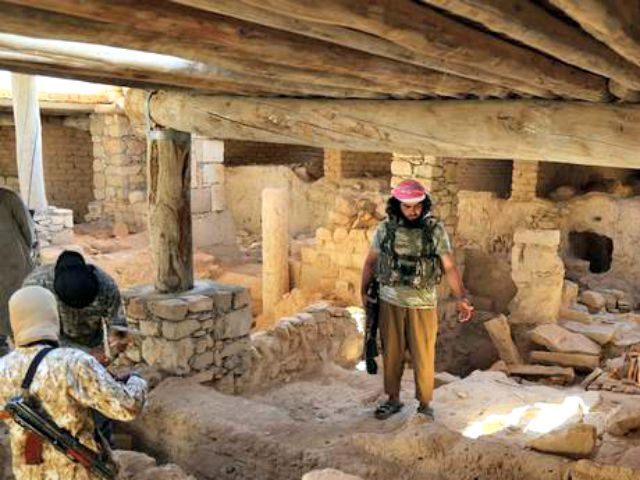The Islamic State (ISIS/ISIL) has accelerated its demolition and looting of antiquities in Syria, reports The New York Times (NYT).
“Much like the grinding slaughter of human beings, the ravaging of irreplaceable antiquities in Syria and Iraq has become something of a grim wartime routine,” notes the article. “Yet the cumulative destruction of antiquities has reached staggering levels that represent an irreversible loss to world heritage and future scholarship, archaeological experts and antiquities officials say.”
“It has accelerated in recent months as the self-declared Islamic State has stepped up its deliberate demolition and looting, piling onto battle damage wreaked by government forces and other insurgents in Syria’s four-year civil war,” it continues. “That has brought antiquities lovers on all sides to a new level of despair.”
Syrian government officials and local activists revealed that over the past week, in just the Syrian province of Homs, ISIS jihadist destroyed the fifth-century Saint Elian Monastery near the town of Qaryatain and blew up the 2,000-year-old Temple of Baalshamin, one of the best-preserved structures in the ancient city of Palmyra, considered one of the world’s most important archeological sites.
ISIS militants reportedly destroyed the ancient temple on Sunday and the Roman Catholic monastery on Friday.
“The wrecking of the Temple of Baalshamin in Palmyra over the weekend was a new shock for Syrians and for experts and antiquities enthusiasts worldwide,” reports NYT. “It was the first time since seizing Palmyra from the government in May that Islamic State militants had destroyed a major part of the sprawling complex of stone buildings that still rise majestically from the desert 20 centuries after the city’s heyday.”
Maamoun Abdulkarim, Syria’s antiquities chief, told NYT that he was saddened by his inability to protect Palmyra.
“I feel very weak, very pessimistic,” he said.
ISIS in Iraq and Syria has engaged in the “most brutal, systematic” destruction of ancient sites since World War II, Irina Bokova, the head of the United Nations Educational, Scientific and Cultural Organization (UNESCO), told the Associated Press (AP) on Friday.
“The art and architecture of Palmyra, standing at the crossroads of several civilizations, is a symbol of the complexity and wealth of the Syrian identity and history,” she added in a statement Monday. “Extremists seek to destroy this diversity and richness, and I call on the international community to stand united against this persistent cultural cleansing.”
Bokova accused ISIS of being responsible for “a new war crime and an immense loss for the Syrian people and for humanity.”
The terrorist group has destroyed many archeological sites as it conquered territory across Iraq and Syria, looting them for profit and damaging some for propaganda.
ISIS gloated over the destruction of the Temple of Baalshamin in propaganda images released online Tuesday that appear to show its members blowing up the first-century structure, AP reports.
Last Friday, the terrorist group posted propaganda photos on social media showing bulldozers razing the Saint Elian Monastery near the town of Qaryatain, which the jihadists captured in early August. ISIS terrorists abducted dozens of Christians there earlier this month.
“The Islamic State, also known as ISIS, ISIL or Daesh, has set about destroying objects and buildings that it views as idolatrous under its interpretation of Islam, even as it has also proved willing to sell them for profit,” reports NYT. “In northern Iraq, the Islamic State has bulldozed mud-brick ruins at Hatra and Nimrud and ransacked the Mosul Museum. In eastern Syria, it has illegally excavated and sold countless artifacts, following the example of many other parties in the war.”
In July, ISIS destroyed the famous Lion Statue of Athena outside Palmyra’s museum after seizing and looting the city known as Tadmur in Arabic.
“Neither [Syrian] government forces nor their armed opponents have taken much care to preserve historical structures, and both have used medieval castles and winding alleyways for the defensive purposes for which they were originally built,” according to The New York Times.
Nevertheless, both government and insurgent supporters in Syria have worked to preserve ancient sites.
“With the opposition, we will have some kind of compromise,” Mr. Abdulkarim reportedly stated, in striking remarks for a Damascus official, where the government tends to refer to all rebels as terrorists. “At the end of the day, it is politics.”
“But with ISIS, it is different,” he added. “ISIS will attack all things.”

COMMENTS
Please let us know if you're having issues with commenting.